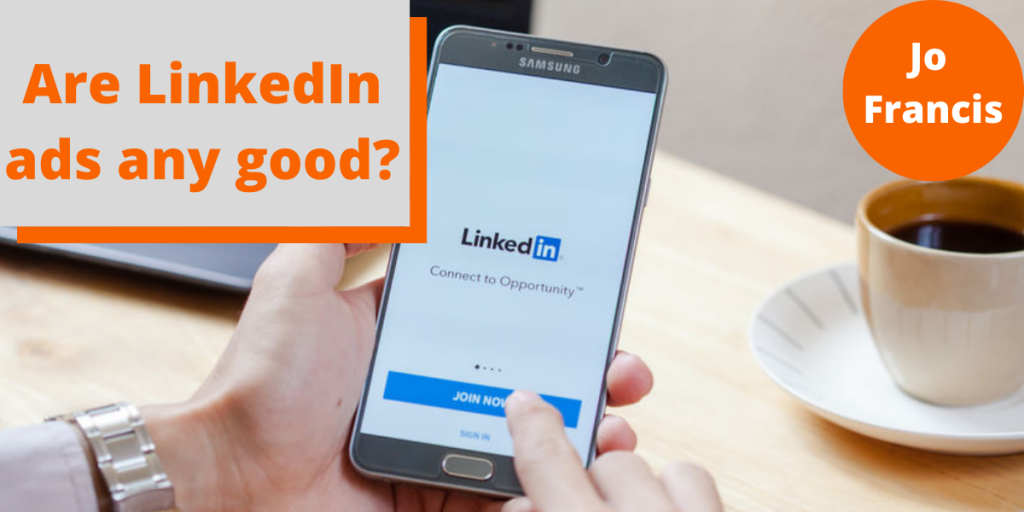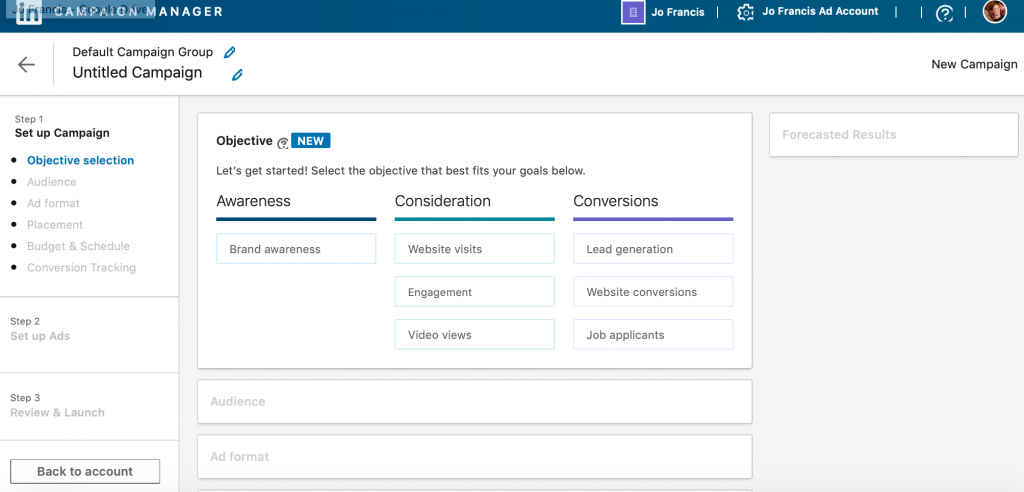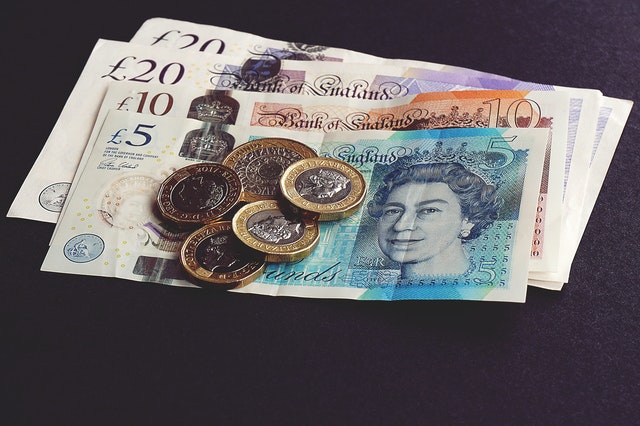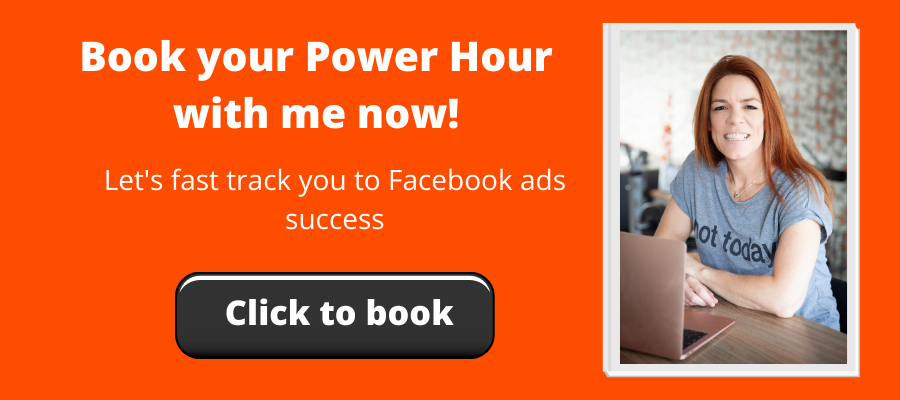
Are LinkedIn ads any good?
As yet I’m not a LinkedIn ads expert (watch this space though…!) but I thought I’d write a blog about LinkedIn ads for those that, like me, are interested in learning more about them and potentially finding out if they could make up part of the marketing mix for their business.
I am currently training in LinkedIn ads, because I see their potential and because of the nature of my business; helping other small business owners build their sales funnels with Facebook ads and email marketing, I can definitely see that LinkedIn ads could be beneficial to my clients.

Why use LinkedIn and LinkedIn ads
LinkedIn has been around for 17 years and is very much viewed as the social networking platform for the “professional”.
LinkedIn has over 575+ million users, with more than 260 million monthly active users. And the stats reported are that of the LinkedIn users who are engaging with the platform monthly, 40% access it on a daily basis.
Although the US has the most LinkedIn users at 133 million, 70% of LinkedIn users are from outside of the USA. In 2019 there were over 25 million registered LinkedIn accounts in the UK, which means that around 75% of the working population in the UK has a LinkedIn account.
Hubspot research has found that LinkedIn is 277% more effective at generating leads than Facebook and Twitter.
The first ad ran on LinkedIn in 2005, with sponsored content being brought in during 2013. In 2014 LinkedIn acquired Bizo, which was very specific ad targeting technology and this has allowed them to grow and build their advertising capability in the last six years.
Just last week Social Media Today shared that LinkedIn has given its platform a new, fresh update, while it’s also announced the global rollout of LinkedIn Stories – which clearly shows that the platform is ever evolving and improving.
How do LinkedIn ads work

Now we come to the bit that I have thoroughly investigated and whilst it seems that Facebook/Instagram ads and Google ads are still the “go to” there is an awful lot of good stuff to be harnessed with LinkedIn Ads.
The set up for LinkedIn ads is remarkably similar to Facebook ads, so if, like me, you’re already familiar with that, then there’s every chance that you’ll feel right at home.
The ad set up is situated in Campaign Manager, where, again much like Facebook, you have the opportunity to decide on the objective of your ad from awareness, consideration and conversion.
You can then create carousel ads, conversation ads, dynamic ads, job ads, lead gen forms, message ads, single image ads, text ads, video ads… There’s a whole stack of ad formats to choose from.
Much like the Facebook pixel, which I’m constantly banging on about and telling everyone they MUST set up on their website, LinkedIn have the Insight Tag, which is a piece of lightweight JavaScript code that you can add to your website to enable in-depth campaign reporting and unlock valuable insights about your website visitors.
LinkedIn has a similar functionality to Facebook when it comes to audiences – allowing you to create ads to target either cold or warm audiences and gives you the opportunity to really drill down and target very specific users.
Are LinkedIn ads expensive?

This question is really important for me. Having worked in Facebook ads for a number of years, I’ve been able to produce really cost effective results for clients. Being able to help small businesses harness the power of Facebook advertising cost effectively has been key to growing my client base, so I want to know that LinkedIn is able to produce a similar ROI for my clients.
Now bearing in mind I haven’t experimented with LinkedIn ads yet, the information I have on pricing and cost effectiveness is garnered from what I’ve learnt from others.
As you would surmise, LinkedIn is considered strictly for business (rather than Facebook and Instagram which are very much a mix of business, pleasure, social, friends and family etc) and as such, the advertising platform reflects this.
B2B businesses appear to be the best candidates for LinkedIn advertising, and particularly companies that are prepared to work with a fairly reasonable budget. From what I can see, those companies in the B2C arena are best placed sticking with Facebook and Instagram. Whilst it’s probably not impossible for B2C companies to generate new leads and sales on LinkedIn, it doesn’t appear that it would be a cost effective move. Personally, knowing that I can generate strong leads for my clients from as little as £1 a day on Facebook, this would deter me from persuading many of my clients across to LinkedIn advertising.
As I understand it, LinkedIn recommends working with a budget of $5,000 per month and on average most companies pay $5.26 per click (CPC), $6.59 per 1000 impressions (CPM) and $0.80 per send (CPS) when advertising on LinkedIn.
Cost-per-click (CPC): You pay when people click on your ad. This is the best option if you want to drive traffic to your page.
Cost-per-impression (CPM): Is where you’re paying for every 1000 impressions. So you’re paying for people to view your ad, but not necessarily interact with it. The main goal here would be raising brand awareness.
Cost-per-send (CPS): This is the cost when you send information through sponsored InMail, and your ad message goes directly to your target audience in their LinkedIn mailbox.
Do you think you’re ready for LinkedIn ads?
Whilst the need for larger budgets might be a little off-putting, nothing I’ve learnt to date has made me think that LinkedIn ads aren’t an area I should explore for my clients.
I think the key will very much be understanding the different nature of LinkedIn, in comparison to Facebook and Instagram. It’s a business platform, so the copy and images will need to be more reflective of that – lots of focus on the features and benefits of the products and services, rather than the emotive copy used on other platforms.
I always test, test and test again with ads on Facebook, and I’ll be applying the same tactic to LinkedIn.
I will be running LinkedIn ads for clients over the next month or two, so will report back my findings in a new blog, when I’ve had the opportunity to get really hands on with the ad set up and management.
In the meantime, I shall remain the biggest supporter of Facebook ads, so don’t forget to book in your Power Hour so we can work out a plan for getting you up and running with Facebook ads.

